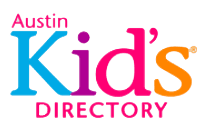May is Better Speech and Hearing Month!
Happy Better Hearing & Speech Month! May marks the 88th anniversary of Better Hearing and Speech Month (BHSM), a month dedicated to raising awareness about communication disorders and promoting treatment that can improve the quality of life for those who experience problems with speaking, understanding, and/or hearing.
If you suspect your child has a problem communicating, the first step is to schedule an evaluation with a Speech-Language Pathologist to measure your child’s communication as compared to his/her peers. Equally important is to have your child’s hearing formally evaluated. If a concern is identified, a Speech-Language Pathologist can help by providing intervention to improve speech and language skills. If a hearing loss is found, an audiologist can help counsel and treat the hearing loss with possible suggestions of hearing aids or other devices. Below is a list of some of the fun things you can do in Austin along with ideas on how to help your child’s speech and language development:
• Go to pet store and discuss the animals found in the store. Discuss what the animal might feel and sound like, its habitat and diet. Compare the pet’s characteristics to others within the store and those not found in the store.
• Travel to your local library for Story Time. Check out a book, and while reading the words of the story, identify pictures, and talk about them with your child. Have your child re-tell the story.
• Visit area parks and ponds and feed the ducks, fish and turtles (as permitted) and discuss your experiences.
• Visit area splash pads in Austin (double check they are open and working before your visit), and talk with your child during water play. Bring beach toys and explore your child’s creative abilities.
• Register and attend a free Lowe’s Build and Grow or Home Depot Kids (check age requirements and register prior to the event). Once home, help your child tell a family member how he/she made the project.
• Walk in your neighborhood and take pictures/write/draw images of all the sounds you hear and all the things you see. Discuss as you walk, and then tell your experiences to family members or friends.
• Ride the bus or train to an Austin Museum (Austin Nature and Science Center, The Thinkery, and many more). Talk about the things you see on your way to your destination and the things you do at the museum.
• Pack a picnic lunch or dinner (have your child help plan and prepare the picnic), and head outdoors or somewhere other than the kitchen to eat it. Discuss the various tastes, textures and temperatures of your meal.
• Ride your bikes or skate on the Veloway, and stop at the Lady Bird Johnson Wildflower Center for a visit (they are near each other). Talk about your day.
• Attend a free concert where a child friendly musician performs or attend Blues on the Green at Zilker Park. Have fun, talk about the music, and make sure to bring hearing protection!
Here are 8 language-friendly strategies to use at these activities and every day:
1. Use shorter sentences with simple vocabulary to help your child understand. “Listen, I hear a bird! (Pause) Look, it’s a blue bird!”
2. Highlight words when you talk by changing the sound of your voice. “That’s a BLUE BIRD” (saying the words “blue bird” a little more loudly and clearly).
3. Direct your communication to your child.
4. Use longer pauses between words and sentences. Give plenty of time for your child to respond. If needed, silently count to 10 before talking again. This will allow your child to process what you say and give him time to respond.
5. Ask questions and self-dialogue such as, “I hear a bird; oh, he’s in that tree. See that bird in that tree? What is he doing?” Then pause, and wait for your child to respond.
6. Don’t be afraid to repeat –for example, say, “A bird–a blue bird,” repeating the word bird.
7. Repeat and expand on your child’s sentences (child says “bird” and parent rewords by saying “Yes, a blue bird”.)
8. Predict what will happen before your experience, then once there, talk about what is happening now. It’s easier for children to understand and make connections using this strategy.
Ashley Fairleigh, M.S, CCC-SLP, is a licensed speech language pathologist with over 12 years of experience in working with children and adults with speech and language disorders. She is also a returned Peace Corps Volunteer (Niger, 1997-1999). Currently, she works with THERAPY 2000, Inc. by providing pediatric speech, language and feeding/swallowing therapy in naturalistic settings. She can be reached at Ashley.Fairleigh@t2000.com or at 512.359.3703.

